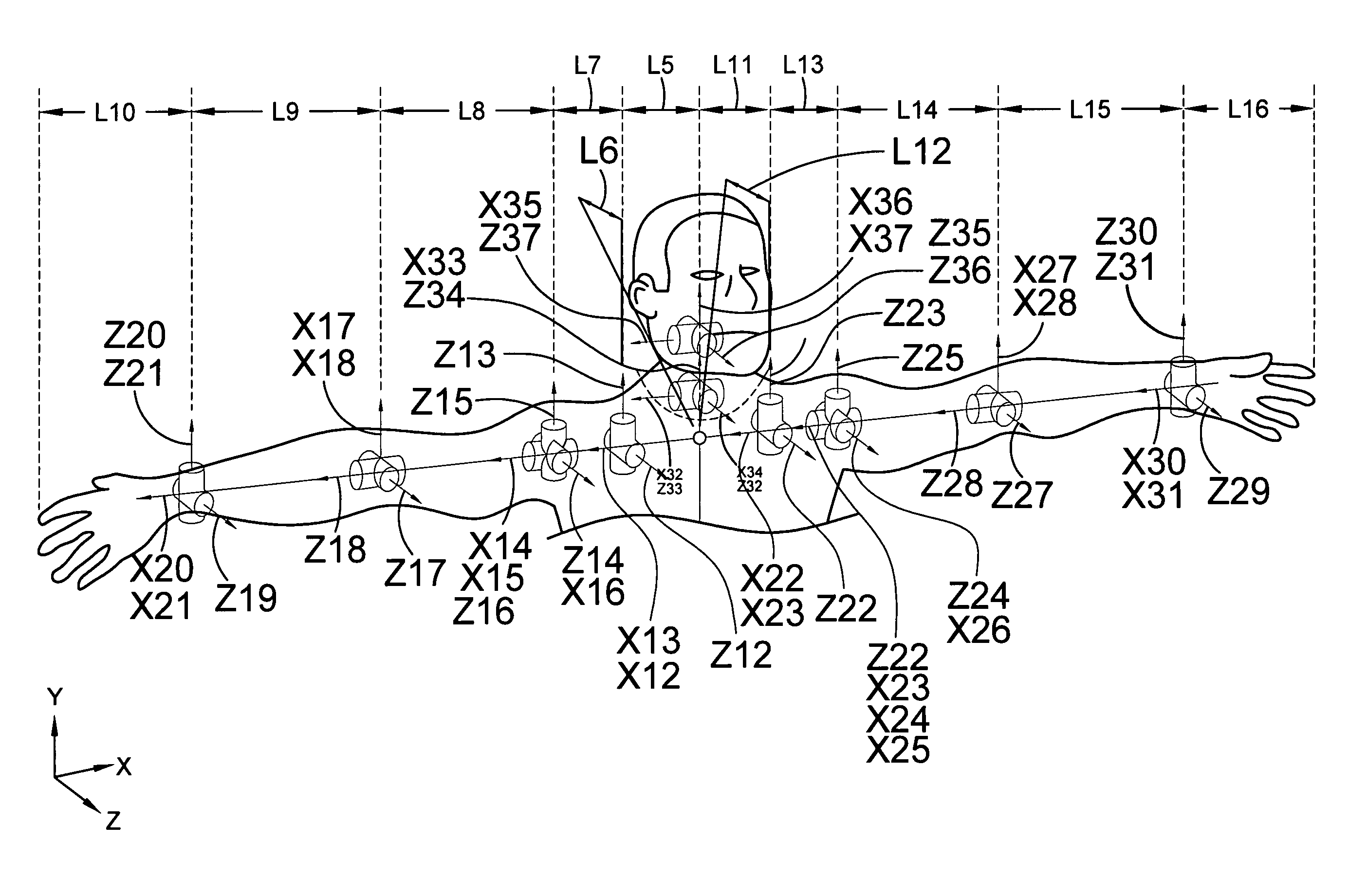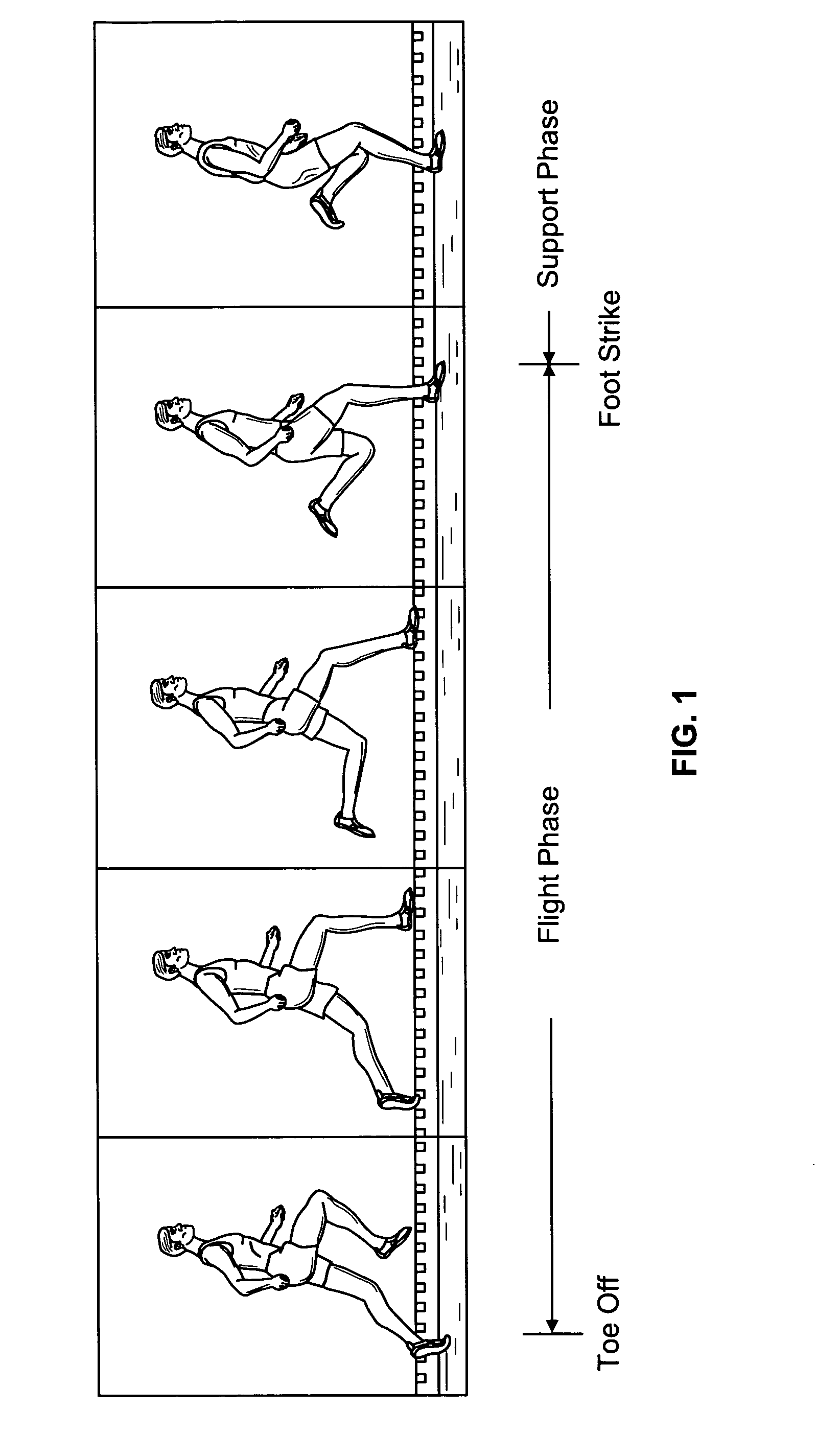System and methods for digital human model prediction and simulation
a digital human model and prediction algorithm technology, applied in the field of animation, can solve the problems of cumbersome process, easy imposed joint torque and angle constraints, etc., and achieve the effect of efficient prediction and simulation
- Summary
- Abstract
- Description
- Claims
- Application Information
AI Technical Summary
Benefits of technology
Problems solved by technology
Method used
Image
Examples
Embodiment Construction
[0057]The detailed description of the preferred embodiments below is discussed with respect to the predictive dynamics of running and walking for illustrative purposes only. The present invention is applicable to any contemplated task.
[0058]In one embodiment discussed herein, the present invention is formulated as an optimization-based predictive dynamics problem for running. In another embodiment discussed herein, the present invention is formulated as an optimization-based predictive dynamics problem for walking. First, the problem of running is discussed.
[0059]In the problem of running, the objective is to predict (or calculate) joint angles and torques at the joints over time, also called joint and torque profiles, respectively. For the problem of running, a minimal set of constraints is imposed in the formulation of the problem to simulate natural running of the digital human. The human running problem is distinguished from the walking problem in that there is a flight phase du...
PUM
 Login to View More
Login to View More Abstract
Description
Claims
Application Information
 Login to View More
Login to View More - R&D
- Intellectual Property
- Life Sciences
- Materials
- Tech Scout
- Unparalleled Data Quality
- Higher Quality Content
- 60% Fewer Hallucinations
Browse by: Latest US Patents, China's latest patents, Technical Efficacy Thesaurus, Application Domain, Technology Topic, Popular Technical Reports.
© 2025 PatSnap. All rights reserved.Legal|Privacy policy|Modern Slavery Act Transparency Statement|Sitemap|About US| Contact US: help@patsnap.com



